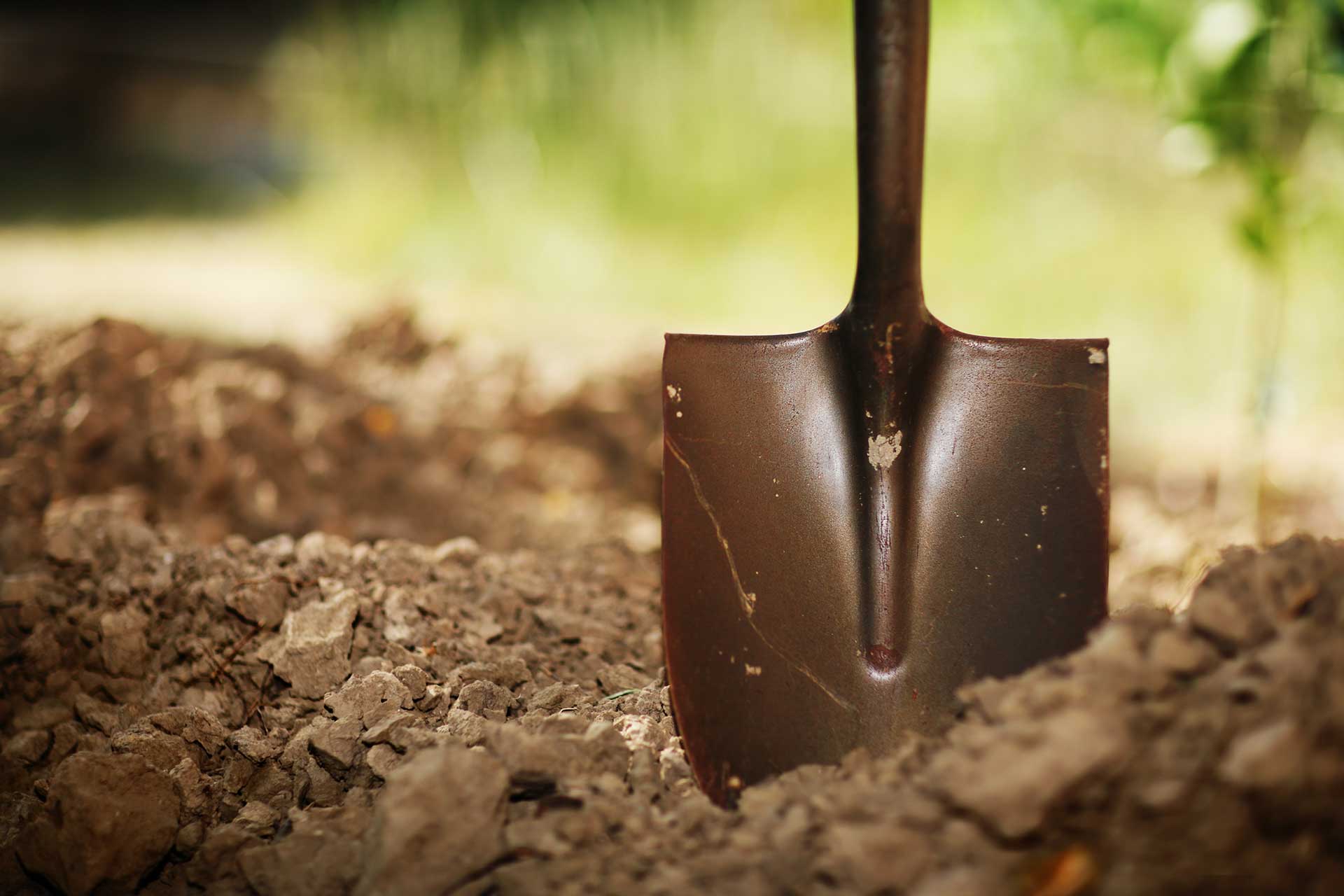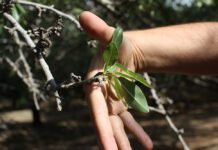A shovel. A farmer’s best friend and sometimes worst enemy. You can hear it, calling your name, beckoning you to help it shake off that winter coat of rust and get into that soil. Of course, it can’t do it alone, but the old saying, “the best thing a farmer can put on his field is his own footsteps,” rings especially true in the spring. Last year we had a few incredible deluges late in the spring here in the Central Valley of California that upset the apple cart. This year, we are praying for that again as the drought pattern has set in early. Until then, we need to see what has changed over winter, under our trees, with a good soil sample.
Starting the year off with a spring soil sample allows you to create a road map for your nutrition plans. You can get a better feel for the nutrient movement over the winter with rainwater and what was pulled up into the trees. Knowing whether you’re sufficient or out of balance with your nutrient load will help you start the season off on the right foot.
Soluble Calcium
If your calcium is below 60 percent, you need to make a correction. Roots need soluble calcium for the early flushes as cells divide and build structure. You’ll also need a constant supply throughout the season as the leaves and nuts develop. Once calcium finds its place in a plant, it stays there and is no longer mobile in a plant, even if new growth is deficient. Unfortunately, many times a soil sample will show ample calcium but a deeper dive into the saturation paste extract will let you know it isn’t soluble. That goes back to my old analogy of being hungry, wanting a steak, but all you have access to is a frozen side of beef.
Phosphorous
In the spring, plants need phosphorus to create energy from the sun. Soil reports indicating P below 20 ppm is troublesome, even more so if phosphorous is tied up. A plant can only drink orthophosphate. Many of our less expensive fertilizers are mostly poly-phosphate.
Studies show it can take as long as 100 days to break down poly into ortho in cooler and wet conditions. If we dump excess amounts of unavailable polyphosphate on a soil heavy with unincorporated, insoluble calcium, we just created very hard, small rocks in our soil—rocks that resemble the same rock we mined and altered to render those two nutrients in the first place?!
Don’t shoot yourself in the foot. Use smaller shots more often, both upstairs and down. As calcium is needed more heavily in root flushes, put it there, and you can go upstairs that week with your phosphorus. As temps warm and you bump phosphorus shots in your fertigation, go upstairs with a foliar spray of calcium.
Magnesium
Looking at your soil report, one often overlooked nutrient is magnesium. On the east side of the valley, we are very often limited by our magnesium levels and may need foliar shots to supplement what is pulled from the soil. Remember, Mag is the central element in chlorophyll. That’s kind of important. But Mag is going to be a strong contender in upsetting our Calcium and Potassium levels. High Calcium and low Magnesium is a problem. On the flip side, high Magnesium soils are the most difficult to make adjustments to. It’s a smaller element with the same double charge as Calcium. It pulls pretty hard as a soil magnet. Liming high mag soils to increase Calcium can bring levels in check quicker but have detrimental effects on your pH. You’ll now need to try to increase organic matter and use acids to treat your water and bring that pH down.
Potassium
With Calcium and Magnesium levels in check, Potassium becomes critical to offset Sodium absorption. Soils with Sodium over 3 percent and Potassium at or below that number will have issues keeping that element at bay. When my growers are discussing salts with me, they are usually referring specifically to Sodium. Almost every fertilizer is a salt, but sodium is top of mind. It’s nearly the same size as Potassium and has the same charge. Unfortunately, it fits neatly into the same electrolyte space as Potassium in a plant and therein lies the issue. Overloading the soil saturation with high sodium levels as late spring potassium demand increases will give you burn issues. Treat the water, treat the soil. It’s easy to make potassium soluble, but plant ready and salinity index can be another issue. Murriate of potash adds Chloride to the soil. Sulfate of potash adds SO4 which may already be high from past gypsum applications. Potassium hydroxide by itself is caustic potash. Potassium thiosulfate in heavy doses can burn roots. Know your nutrients, their effects and their derivatives. The type of nutrient is often more important than the amount.
Make a Nutrition Plan
So, the shovel is gleaming, you added a bit of iron to your soil with all your effort, you have a report, now what? Turning on the water and doing the exact same thing you have done for the last 10 years will probably get you the same results.
If you want higher yields, formulate a plan. Sit down with your crop advisor, calculate how much of each nutrient you’ll need compared to the budget, and how much the soil can actually take (without causing a detrimental effect somewhere else!) Now plan those applications to match nutrient demand curves. Putting out too much nutrition at a time when a plant can’t drink it can cause ripple effects elsewhere. Use these spring soil reports to sharpen your focus on matching a plant’s needs. Digging deeper into your soil will keep you from digging deeper into your pockets to make a profit.
















